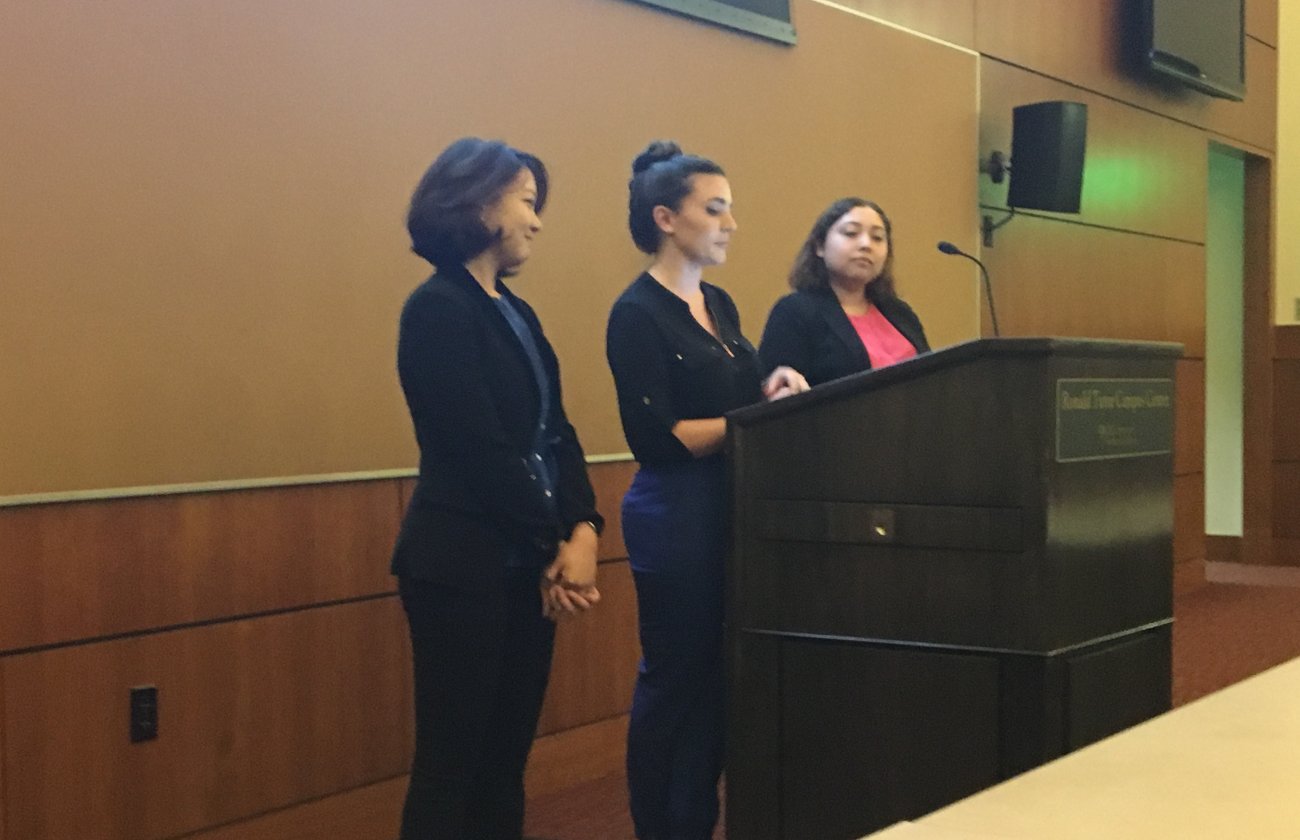USC’s Annenberg School of Communication and Journalism, School of Cinematic Arts and Keck School of Medicine collaborative “Transforming Cancer Knowledge, Attitudes & Behavior Through Narrative” team has won the National Institutes of Health Common Fund 10-Year Commemoration Video Contest, receiving the most number of “likes” for their video on their Common Fund Research. In addition, this research has also won the 2013 Top Translational Research Award, at the D.C. Health Communication Conference and the 2013 Annual American Public Health Association’s Public Health Education and Health Promotion Contest Award.
In 2010, Dr. Sheila Murphy (USC Annenberg) and Dr. Baezconde-Garbanati (from the Institute of Health Promotion and Disease Preventive Medicine at USC’s Keck School of Medicine) were awarded a Transformative R01 grant from the National Institutes of Health. Transformative RO1s are designed to “accelerate the current pace of discovery” and “challenge the status quo with innovative ideas.” The purpose of this 5-year grant was to challenge the underlying assumption that the traditional recitation of the facts is the optimal way to convey health-related information vs. the use of narratives. This collaborative transdisciplinary team from USC (and including researchers at Portland State University and San Diego State University) of medical researchers, script writers, cinematographers, physicians, psychologists, communication scholars, and public health professionals created an intervention to re-examine and reinvent how health-related information is conveyed.
Apart from the P.I. Dr. Sheila Murphy, other Annenberg members affiliated with this study include Professors Doe Mayer and Sandra Ball-Rokeach; Alumni Lauren Frank (PhD 2011), Meghan Moran (PhD 2009) & Joyee Chatterjee (PhD 2012); As well as current PhD students Nan Zhao and Angeline Sangalang.
To empirically test whether utilizing a narrative format might produce a stronger and more sustained impact on knowledge, attitudes and prevention behavior compared to a non-narrative format, our team produced two short films each 11 minutes in length and both containing the same facts regarding cervical cancer prevention, detection and treatment. The Tamale Lesson conveys facts regarding the cause of cervical cancer, as well as how to prevent it (via the HPV vaccine) and detect it (via Pap tests) using the Romeo family’s preparation for their youngest daughter’s Quinceañera or 15th birthday as the narrative vehicle. The non-narrative film, It’s Time, contains the same facts but uses a more traditional approach featuring doctors, patients, facts and figures.
The results of this large scale field experiment revealed that the narrative was indeed more effective in increasing cervical cancer-related knowledge, attitudes and 6 months later at increasing rates of cervical cancer screening. Moreover, the impact of narrative virtually erased the ethnic disparity that existed among the participants at baseline. Several papers have been published from this research including in the Journal of Communication (Murphy, Frank, Chatterjee, & Baezconde-Garbanati, 2013); International Review of Social Research (Moran, Murphy, Frank & Baezconde-Garbanati, 2013); Asian American Journal of Psychology (Zhao, Huh, Murphy, Chatterjee, & Baezconde-Garbanati, in press) ; and the California Journal of Health Promotion (Baezconde-Garbanati, Murphy, Moran, Cortessis, 2013).
References:
Baezconde-Garbanati, L., Murphy, S. T., Moran, M. B., & Cortessis, V. K. (2013). Reducing the excess burden of cervical cancer among Latinas: Translating science into health promotion initiatives. California Journal of Health Promotion. 11(1), 45-57.
Moran, M.B., Murphy, S.T., Frank., L., & Baezconde-Garbanati, L. (2013). The ability of narrative communication to address health-related social norms. International Review of Social Research, 3(2), 131-49.
Murphy, S. T., Frank, L. B., Chatterjee, J. S., & Baezconde-Garbanati, L. (2013). Narrative versus non-narrative: The role of identification, transportation, and emotion in reducing health disparities. Journal of Communication. 63(1), 116-137. doi:10.1111/jcom.12007
Zhao, N., Huh, J., Murphy, S. T., Chatterjee, J. S. & Baezconde-Garbanati, L. (In press) Self-construal as a predictor of Korean American women’s intention to vaccinate daughters against Human Papillomavirus. Asian American Journal of Psychology.









